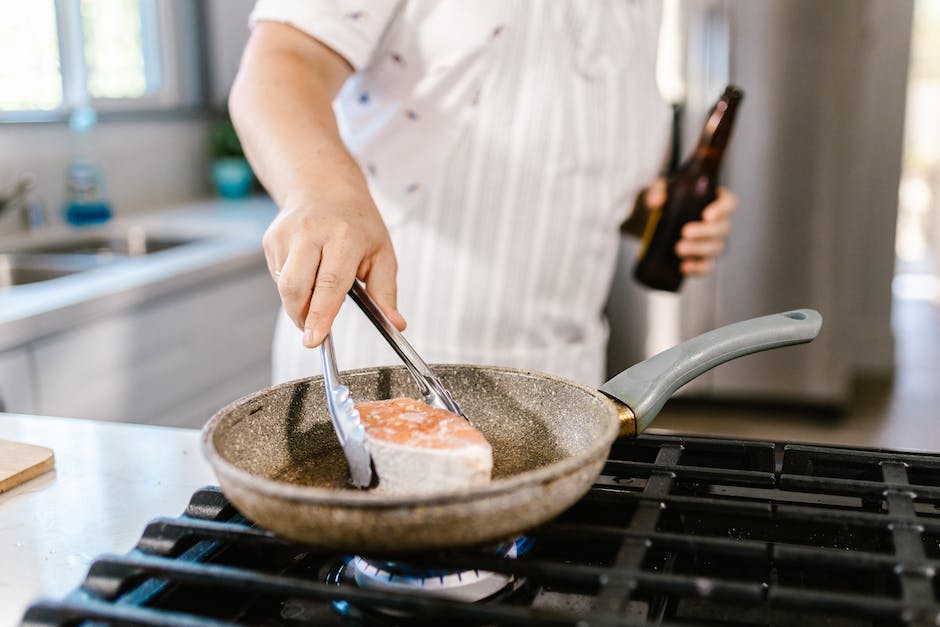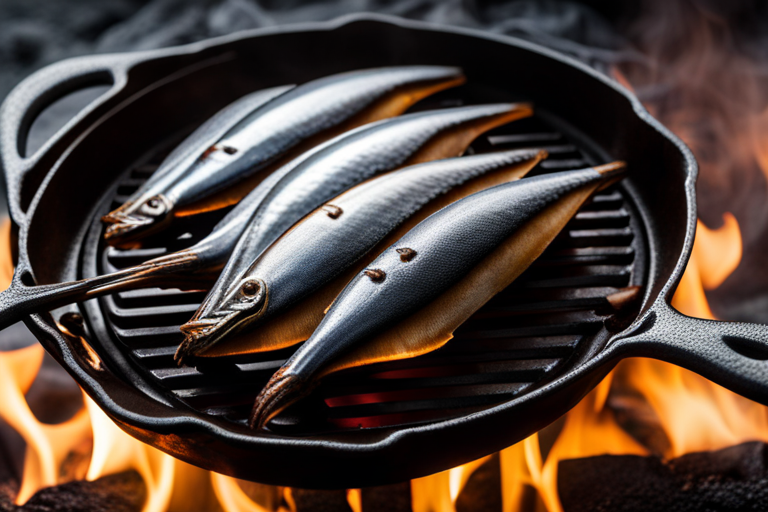You know that smell that hits you when you open the door to your fridge and realize something’s not quite right?
That’s how I feel every time I open the door to my fridge and see a piece of fish that’s been sitting out for more than two hours.
But what exactly happens when you leave fish out too long? And how can you tell if it’s still good?
Well for starters, let’s talk about what happens to fish when it sits out for too long. When fish is left at room temperature for over two hours, bacteria start to multiply. This means that your once-delicious piece of salmon is now teeming with bacteria and ready to make you sick. So what does this mean for you? Well, most importantly: don’t eat it! And second: if you’ve got some leftover salmon from last night’s dinner party on the countertop, be sure to put it back in the fridge as soon as possible.
Always keep an eye on fish when cooking

Photo by Quang Nguyen Vinh on Pexels
When baking or grilling fish, how long it takes to cook completely depends on what kind of fish you are cooking and whether or not it is cooked already before you start boiling it down or broiling it.
If the fish has been cut into individual pieces first, then according to the USDA, most seafood (other than flounder) should be grilled or fried for one minute per side beyond opaque. This includes shrimp, crab, salmon, tuna and so on!
However, if the whole piece of fish is used, then according to The Healthy Home Chef, slow roasted whitefish like branzino can take up to twenty minutes depending on thickness. For thinner fish such as snapper, catfish or trout, there is no need to worry about overcooking because they will finish baking/griddling in the second half of the time.
The temperature of the fish affects the cooking time

Photo by RODNAE Productions on Pexels
When baking or grilling fresh fish, how long the fish can sit before being cooked is an important factor! There are two main reasons to this.
The first is consistency. Different types of fish cook at different temperatures, so depending on what kind of fish you are boiling or broiling, it will take a longer or shorter amount of time to fully bake/broil.
Fish that are higher in fat content (like salmon) need more time to fry or roast thoroughly because they contain lots of oil. This makes them very good food, but if left too long without burning all that extra oil, then people may find them bit much.
The second reason why having fish early is important is flavor. If the fish has not yet been cooked when your eat, its texture and flavor may be lost.
So, how do you know if your fish is done? The best way to check this is by using a knife to poke into the flesh – if it comes out clean with no bone, then the meat is completely dried and overcooked.
If it does have a small piece of white tissue attached, then pull it off and see whether it snaps away easily– if it does, then it’s still raw enough.
Cooking time depends on the thickness of the fish

Photo by Ivan Samkov on Pexels
When baking or broiling fresh seafood, how long you cook it is dependent on two things: how thick the fish is and what temperature your grill/broiler is.
Thickness matters because thicker pieces take longer to cook through due to their density. For example, a one-and-a-half pound (680 grams) salmon fillet will not fully cook in the same amount of time as a half pound (227 grams) salmon fillet!
The rule of thumb is to start cooking the fish at medium heat and then check it every few minutes until it is completely cooked. Make sure you test for “cooked” by poking it with a fork; if it flakes easily, it has enough internal moisture and needs to be turned up the stove.
Grills vary in temperature so depending on the grill, bake times may be different than when we mentioned before.
Always check for doneness before serving
When baking or boiling most fish, you should be able to pull away pieces of flesh without it breaking down completely. With thicker fleshed fish like salmon, cod, and halibut, a cooked-through texture is wanted so do not overcook these foods!
For thick whitefish like snapper or grouper, your skin will stick slightly to the grill as they cook, making it difficult to determine if they are fully cooked. The solution? Use a knife to cut into the meat to see if it is soft and done inside.
If you have any leftover grilled fish that were very thin, the oven temperature is your best friend! You can either roast them in the oven or reheat them later.
Fish is done when it turns opaque

Photo by RODNAE Productions on Pexels
When cooking fish, how long your fish cooks for really matters! The timing can make a big difference in flavor and texture. Luckily, there are some easy ways to know if your fish is cooked all the way through.
First, try pulling away a piece of meat and see if it easily pulls off into pieces. If so, it has not fully cooked yet! This applies particularly to thinner fillets such as trout or flounder.
Second, make sure that it smells good and tastes good. If it does not taste right, then it may be overcooked.
Third, take a look at the back of the fish. It should be brown and crisp where the grill touched it. Again, this depends on what kind of fish you are baking/griddling. For thick cuts like salmon or swordfish, this is not important.
The time needed to cook thin white-meat fish like bass, snapper, or halibut varies depending on the temperature of the grill.
Use a meat thermometer to be sure
When baking or grilling fish, how long it takes to cook usually depends on two things: thickness and temperature.
Thickness makes a difference in how quickly the fish can absorb heat. Thin fillets of fish will cook more slowly than thicker ones!
Temperature is an important factor when cooking fish. Different types of flesh take different amounts of time to warm up and cook through.
Muscle-packed whitefish like flounder or cod would take much longer to fully bake or grill than thick cuts like salmon, for example.
This article will tell you about one good way to check if your fish is cooked all the way through! It’s called checking internal temperature.
Fish breaks down when cooked
As with any meat, fish will break down or collapse as it cooks. This includes softening of the flesh and thinning of the bones. The best way to ensure that your bone in particular does not get overcooked is by choosing a thinner piece of fish or thicker filet mignon-style!
Thicker fleshed fish like salmon can even remain raw for some time before being cooked because they contain more protein. Just make sure to wash off all the excess olive oil before cooking to prevent burning or drying out.
Fish and chips are one of our favorite meals due to this fact! When baking breaded foods such as chicken or fries, do not fry the food longer than necessary to avoid over browning the outside. For most people, a good rule of thumb is to use a lighter temperature butter or oils when frying the fish to keep it from sticking to the pan.
You can serve it immediately
While there are no hard and fast rules when it comes to how long fish should be cooked before being grilled or fried, most experts agree that thinner white-fleshed meat like trout, brook trout, and char is best when either baked or roasted whole.
This is because these types of fish have enough collagen (the connective tissue found in muscles) to keep their texture as they cook. If you grill them first, the fire breaks down some of the muscle structure, creating something more akin to chicken breast than fresh, flaky fillets.
For this reason, even if you do not totally trust raw vegetables, sometimes people still recommend boiling or roasting thick whitefish like salmon or halibut until just warm. This helps neutralize some of the flavor, making it easier to enjoy later.
However, for other thicker nonwhite fish like red snapper, grouper, and catfish, cooking them beyond the initial softening stage removes part of their flavor. These foods lose taste as they bake, roast, or fry.


